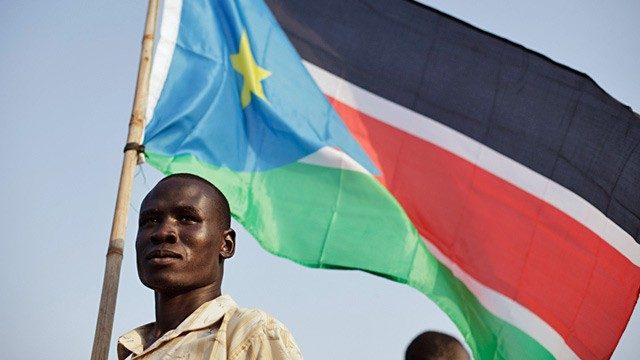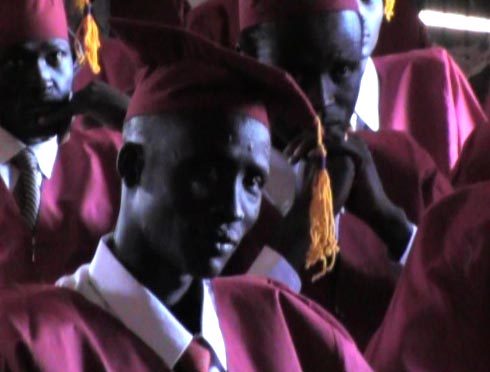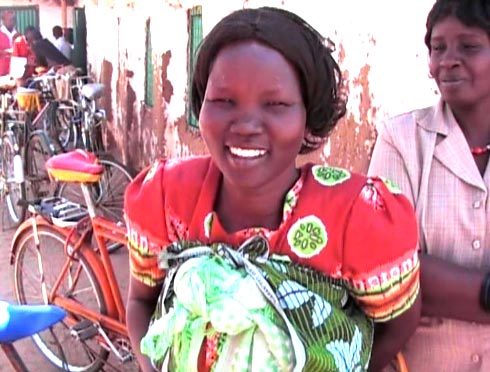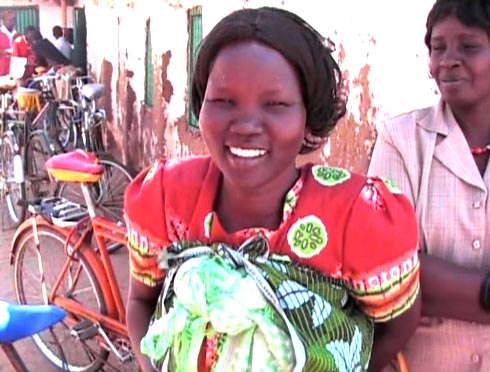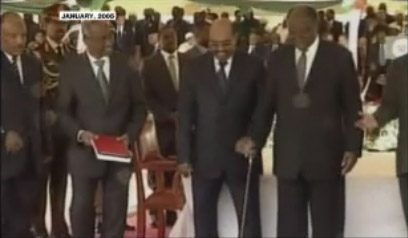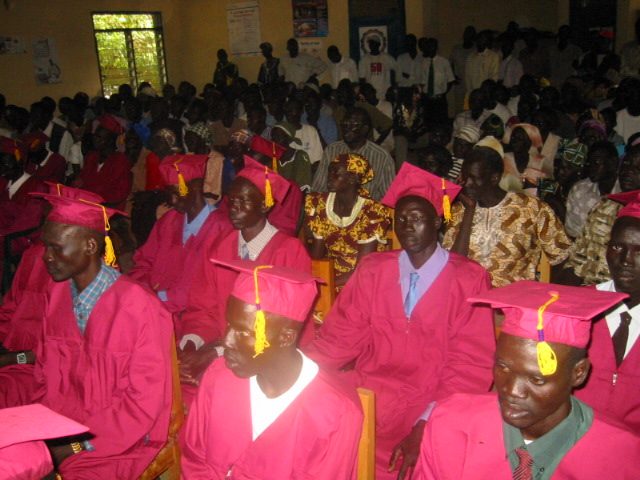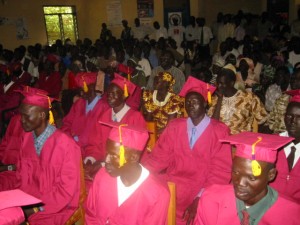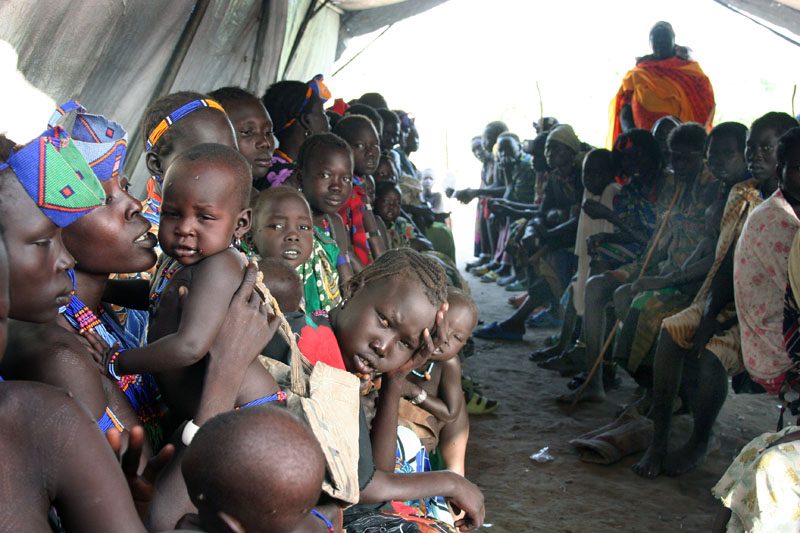- 2002-2009: Missions Field Training of National Operatives from the Sudanese Refugee Communities for their Return
- 2009- : Phase #2 Hi-Tech field operations inside of South Sudan
Christianity and Islam in conflict, A modern Islamic Crusade
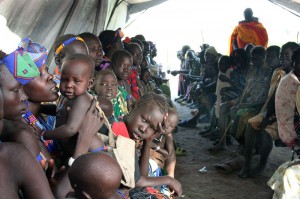 Sudan has had an internal struggle for the last fifty years erupting in Muslim aggression some two years before the over throwing of British colonialism through Islamic uprising. The indigenous people of southern Sudan have suffered untold loss in their epic struggle for the right of religious choice and political self-determination. The Islamic aggression has been fueled by first-world war equipment wit oil rich financing from an Islamic federation. After this epic cost of life and denial of basic human rights, 2005 an agreement was signed between the Islamic governing party of the north, and the SPLA resistance led by Dr. John Gerang representing the people groups of the South.
Sudan has had an internal struggle for the last fifty years erupting in Muslim aggression some two years before the over throwing of British colonialism through Islamic uprising. The indigenous people of southern Sudan have suffered untold loss in their epic struggle for the right of religious choice and political self-determination. The Islamic aggression has been fueled by first-world war equipment wit oil rich financing from an Islamic federation. After this epic cost of life and denial of basic human rights, 2005 an agreement was signed between the Islamic governing party of the north, and the SPLA resistance led by Dr. John Gerang representing the people groups of the South.
Under the arbitrated peace agreement in 2005, Dr. Gerang and a forty person’s delegate of the south had been installed as vice-President of the greater Sudan and President of the Southern structure. Within one month of his inauguration Dr. Gerang which was actually received by millions of Sudanese both from the north and the south, met with an untimely death, along with important members of his cabinet. In collaboration with the Ugandan government the Southern Sudanese delegation was lost in a Uganda helicopter downing with clearly conflicting circumstance. As these events continue in the Dar Fur genocide with the Islamic insurgents in operation and the regrouping of a new liberation army in on the boarder of Uganda called the Lords Army, repatriation of refugee community is being implemented by the UNHCR (United Nations High Commission for Refugees).
The Christian world community can not continue to neglect the epic plight of the indigenous Sudanese Christian movement. The peace treatise of 2005 has given allowance for six years of peaceful religious co-existence, but there is a great acceleration on behalf of Islam to dominate the south and again proclaim it is 75% Islamic. As the south has been absolutely devastated, the Arab League is delegating development to quickly propagate the appearance of Islamic dominance.
The CPA [Comprehensive Peace Agreement] has been signed however refugee population must be networked with, and assistance of all levels of Christian based social development is imperative. In KISOM (Kakuma, interdenominational School of Missions) we have by the end of 2008 over 900 graduates on three levels of achievement with the preparation for strategic and hi-tech mass communication in many of the 34 unwritten dialect and Major languages of South Sudan. The many of the earlier student were from the original refugee groups to come from Ethiopia as the “lost boys of war” in the early 90’s to Northern Kenya. There they received education in English and now have language capabilities, from Classic Arabic, English, any of the 97 living dialects including the 34 dialects inside that are with out alphabet and totally unwritten. At this time we are absolutely in need of partnership to directly work with teams that are going into their strategic, home areas of Southern Sudan.
South Sudan under the CPA states a article of agreement deemed as “The right of Religious peaceful Co-existence”, creating the opportunity to be truly unique. The potential is for unprecedented evangelism not only to the Animistic tribes of South Sudan , but as well to a “passive cell invasion” of the Islamic populations from North Sudan into the war torn South has now come out of the epic struggle of the past fifty years of Sudanese history. Our phase #1 trainees that have returned to their home regions is a key to preparing the Sudanese national church movement for the task.
History and Conflict of the Sudan: Sudan is the largest nation in Africa, being the link between East Africa and the Islamic Northern countries. The Sudan by its history was wholly inhabited by the black African Nilotic tribes with rich diversity, and has over five hundred tribal distinctions. A strong influence from the northern Arabic populations from Egypt, Syria, Persia, and continued to come as traders and Coptic missionaries. The flood plain of the Nile had received a strong Christian influence in the first century, and the Nilotic Kingdoms had driven out idolatry to some extent as the expiation of the Muslim conquests begun to move south in the middle ages.
Sudan as a whole was made part of Egypt, as the British colonized Egypt, the Sudan was as well by extension. Christianity continued to expand in Sudan, however as Egypt begun to be taken by new rulers as a strong Muslim movement by force the northern reached begun to be Islamized by the experiential influence of the Sufis. As the twin cities of the north, Khartoum and Omdurman had become conquest to Islamic conversion by the sword the south remained untouched as Christian influence prospered until the 18th and early 19th centuries as the Islamic slaved trade begun to route to Uganda. When the British were driven out of the Sudan by an Islamic uprising eventually it became independent in 1954 under the dominance politically of the Northern Arabic Muslims from Khartoum.
By 1956 the Islamic agenda through what was being called the Arab League begun to be imposed upon the indigenous black African population of the south that were primarily Christian, with over 50% of tribes being still animistic. At that time the Christian missionaries and translators were repressed, and a national education imposed in classic Arabic to Islamize the population. Christianity continued to flourish as an indigenous movement under the extreme oppression imposed upon the black population of the south.
What The Islamic Agenda Had Coined as Civil War: Christianity through a missions influence has had growth on the most part from 1964, under a present day Islamic Crusade, and an agenda implemented by genocide of indigenous black African population. During the period of time between 1964 and 2005 two civil wars have occurred, with an interval of 11 year arbitrated by the pact of 1972 signed in Addis Ababa. This so called peace agreement that was arbitrated with world influence placed the predominantly Christian peoples of the south under Islamic law. The oppression that took place was horrendous, as their despotic law that resulted in the death and dismemberment often with out proceedings to Christian population. During the late 1970 ‘The Great Channel’ was commissioned by Khartoum to stop the flood action of the head waters of the Nile. It was three quarters complete to move through the North Bor region and connect at Bor Town, when a Dinka uprising stopped the excavation. It was clearly understood that the cannel was a part of the Islamic social-architecture for the south, and would so totally disrupt the eco-system that the existence of tribal population would no longer be sustainable.
The first war between the Northern Islamic Army of the North partly financed by the Arab League (not as the Sudanese government of Khartoum only, but Islamic federation of other Islamic countries as well) and the guerilla army comprised of indigenous tribe peoples of the south was called Anyanya I. This war being highly destructive to the population of the south didn’t how ever disperse the indigenous population from their tribal lands very extensively, as the later agenda from Khartoum would exact.
1983- 2005 – ANYANYA II – the beginning of Sudan’s second Civil War; the rise of the SPLA: From 1973 to 1983 the imposition of Sharia Law during the interlude of the peace program, again by international influence, begun a repression by the Islamic government of the North was imposed upon all officials representing the southern population. Governmental officials and Army personnel of the south were brutally purged. Southerners were denied all rights and governmental services unless clearly they were Islamic, as non-Muslims were highly discriminated against as public policy.
Under such despotic oppression the social explosion occurring in 1983 resulted in the large loss of life to Northerners operating in the south. As a result, Khartoum’s government evacuated the South and re-establish in Khartoum as an invading army to the clearly demarcated territories of the separate peoples of Southern Sudan. If you will look on most maps published in the last ten years at lest, you will see a country designation line drawn between North Sudan and Southern Sudan.
At that time southern offices and personnel deserted the army and begun to establish them selves in Ethiopia as the SPLA (Southern, or rather, Sudanese people’s liberation army). 1983-1984, a policy carried out by Khartoum of bombing defenseless villages and mass-invasion begun. In late 1984, most males over the age of 12 were either diseased or evacuated into Ethiopia for the development of the SPLA army. A dragnet was formed by Khartoum’s army to do a mass-genocide of the remaining male youth of the southern population. It can be estimated that well over one hundred thousand children lost their lives as they tried to escape into Ethiopia from their divested tribal areas. An estimated thirty thousand called the “Lost Boys of War” made it out alive to Sudan, and were to be used as child solders in the training camp. Most of this population of children moved south into the desert of Kenya at Kakuma to be assisted under the UN in the early 1990’s. By 1994 a refugee camp was establish and became the resource for education and an estimated 700,000 have been displaced internationally for higher education for the repopulation of southern Sudan, to begin under the agreement of 2005.
What was to follow the invasion of 1984, by the plans of the Islamic government in Khartoum and the Arab league’s agenda, was to depopulate the south of its indigenous population. Then the next step was to control the vast oil deposits of the south repopulating by the Arabic re-population program that is still the agenda of Islamic architecture to date. It has been understood that even after the arbitrated signing of the new peace pact in 2005, this is the hidden agenda intended by Khartoum for the south at this time. It had been estimated that for about eighteen years the Islamic government of the North had been pumping approximately two million dollars of oil a day from southern Sudan via a military guarded pipeline. The estimate was that one million per day was used for the genocide of southern population and one million set aside for the Arab league to rebuild in the south for Islamic development at the point of control, which they feel has been achieved at this point.
Out of the Sudanese Refugee population in the Refugee Camp at Kakuma, Lifestreams International revamped a training program in the Kakuma UN Refugee camp. KISOM, Kakuma Interdenominational School of Missions was enacted under the URC (United Refugee Churches) in 1999, and redirected by Lifestreams International by 2002. The prime objective was to produce a wave of Sudanese comprehensive task force for the return to Southern Sudan. The mission Vision has been to direct a New Missions Spirit Filled movement with Micro-broadcast capacity for rapid pre-literacy education and indigenous evangelism. By 2009, 90% of the graduates from the KISOM project are in their regional placements, and are in the early preoperational stages for equipment and network facilitators.
The must of Christian world vision and assistance for a New Sudan: The opportunity of networking inside of Southern Sudan is in one phrase, time sensitive. Within six years social development from the 50% / 50% deal of the oil wealth in the South, half to go into the Islamic machine and the other half to be used in the internal affairs of the fledgling government of the south. The interim time set forth by the 2005 by the accord is an absolute set up. It give six years, as one is mostly past, for religious freedom and peaceful co-existence. The Arab League’s involvement in east Africa during the past fifteen years has been to lobby by financial incentive to claim over 60% of the population, and then begin to place Islamic law and regulations into the judicial system. The point of Sharia (law) is to systematically taking away personal choice, not non-Christian but anti-Christian at its base. It is not a moral system, difficult for westerners to comprehend. The Southern government is to have a separate banking system, and is to set its own social-economic development to invent a country out of a complex tribal world made up of ninety-seven diverse people groups. The role of Western Christianity in tandem with the indigenous Church for a “New Sudan” must be to establish Christian ethic for social-economic self development within the fabric of this fledgling country that has paid for it’s independence with fifty years of their own blood, mostly without intervention from the world community until now.
The role of Christian development and its influence of solidarity for the new Southern Government: At the peek point of the war devastation from Khartoum’s systematic plans of restructure upon the indigenous south. Many places inside the Flood Plain of the Nile life had been literally set back two hundred years, seemingly before colonial development. One of the main tactics Khartoum used after the booming and systematic destruction of cities, villages, and township, and to destroy all infra-system, was to incite mercenary activity against the main tribe of resistance the Dinka, by the Nuer.
It is the necessary role and capacity of the church to network with the Sudanese repatriation towards tribal solidarity and rapid evangelism of the enter regions of the south. The task of the south is to re-invent their culture and society. It is Christian influence and ethic that is necessary at the brink of a nation’s development of the thought patterns and principle of that nation. In the development of America it was the pastor that taught its intellectual leadership moral fabric and ethic, with you can find primarily missing in most African national development. Colonial Christianity developed with education and correction, and a double standard, without deliverance power at the forefront.
Hi-tech teaching in dialects to a low-tech or no-tech society, to open the door of the outpouring of the Holy Spirit and the hi-tech of God revealing the gifts of the spirit and actual revelation knowledge and individual leading that empowers nation’s individuals. There are seven hundred thousand 700,000 young Sudanese internationally dispersed for higher education. It can be suspected that there is seventy to eighty thousand in refugee camps that are the first to return. The UN has mandated the repatriation to be all voluntary, which means that they have decreased food allocations to under starvation rations, it may be contested but it now is less that half of the former for an adult male. The students of the refugee camp now because they came as children have a second word education and the stark reality of going home to the devastation and former violations of all agreements by Khartoum.
A Key role of the Christian movement from Southern Sudan upon Islamic evangelism: The acclaimed 10/40 window for evangelism comprises much of Islam. It is said that within Islam 70% are tribal populations who forefathers were evangelized by the sword, and represent receptivity of the gospel inside of Sudan and the surrounding Nations of North Africa. Can we think of the vast areas of Tribal Sudan after fifty years of Islamic invasion devastation having an outpouring of the Holy Spirit that moves in cross tribal evangelism? Having the technology and tools to seed tribal Islam with an unstoppable gospel in indigenous dialect to dialect? Under at least the next three years of the CPA until 2011 Muslim reprisal for conversion to Christianity are against the law. The first phase training to the refugee community who are the key to language and training of South Sudan have been trained for micro-broad cast in regional dialects as well as English as a second language and Classic Arabic. The key note is that they are trained with the ‘Camel Method’ of Evangelism, being highly effective in other hot spots in India and Pakistan amongst high density Muslim populated areas. They are already training to catalyze social-economic development on a Christian Basis for developing third and second World counties, and with solar power micro-broadcasting teach verbally before literacy in English.
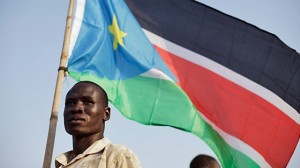 BOR, Sudan — The nascent government of southern Sudan, a key U.S. ally in the volatile nation, is threatened by severe problems including severe cash shortages and growing ethnic tensions spawned by a national ruling party determined to see the south fail, southern officials say.
BOR, Sudan — The nascent government of southern Sudan, a key U.S. ally in the volatile nation, is threatened by severe problems including severe cash shortages and growing ethnic tensions spawned by a national ruling party determined to see the south fail, southern officials say.

